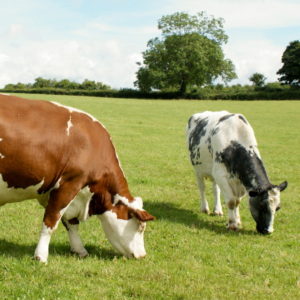 Best practices for managing 4 types of forage: Capitalize on your forage management to optimize cattle nutrition.
Best practices for managing 4 types of forage: Capitalize on your forage management to optimize cattle nutrition.
Each forage type comes with its own challenges and management considerations. And, honing in forage management can help support cattle nutrition needs – and your bottom line.
Take advantage of these best practices for each of the four different forage types
Cool Season Forages:
Fescue is the dominant forage in the U.S. because it’s a hardy forage that can stand up to grazing pressure. However, it doesn’t come without challenges. The predominant fescue variety comes with the risk of endophyte toxicity. Endophyte toxicity occurs when livestock consume fungal endophytes present in the seed head of grass. Fungal endophytes contain ergot alkaloids that can be detrimental to livestock, causing lower feed intake, reduced weight gain and decreased fertility.
An easy method to manage endophytes in fescue is to clip the grass using a tractor-pulled mower before the grass heads out. You can also manage endophytes by inter-seeding legumes like grazing alfalfas, white clover and red clover. These legumes provide additional forage sources and offset the risk of endophytes. Legumes also benefit overall pasture health by providing nitrogen fixation for the soil and extending the grazing season.
With any cool season forage, whether it be fescue, brome or another grass, watch out for grass tetany during the early spring flush. Feeding a mineral high in magnesium, like Purina® Wind and Rain® Hi-Mag, can help supplement your herd.
Warm Season Forages:
There are many options to graze cattle effectively with warm season forages, from improved forages in the southern U.S. like Bahiagrass and Bermudagrass to the native tall grass and short grass ranges to the west. Warm season grasses tend to take off when cool season grasses lose productivity. If you have access to both warm and cool season forages, you’ve got a complementary program.
The biggest challenge with warm season forage is stocking density. Warm season forages typically can’t support the same grazing pressure as cool season forages. Maintain moderate stocking densities for your area and use a rotational grazing system that moves cattle from grazed to rested pasture. If your pastures are too large to fence for rotational grazing, consider using mineral or supplement sites to maximize forage use. Cattle will seek the pasture for minerals and supplements, which you can use to your advantage.
Another challenge with warm season forages is that stem growth tends to outrun leaf growth as the growing season continues. When the stem-to-leaf ratio gets too far out of line, forage quality drops because there are more carbohydrates and less protein and energy. Keep supplemental nutrient sources available to cattle on warm season pasture to ensure their nutrient needs are met throughout the grazing season. Purina® Accuration® block or Purina® RangeLand® protein tubs, along with minerals, can help extend the grazing season and make best use of forages.
Cover Crops:
It’s been trendy the last few years to use mixes of cover crops like turnips, forage sorghums, rye and clover to get more grazing from crop fields. But, grazing systems with mono-crops have existed for a lot longer. Wheat pasture, for instance, has been used to grow calves and maintain cow herds before the grain crop goes to head. Sudangrass has made efficient summertime grazing, too.
An important factor in grazing any forage, particularly cover crops, is to have mineral available year-round. Cover crops might be the lushest forage your herd has all year, but cattle may not fully utilize it. Offering mineral helps maintain an animal’s rumen microbes, which in turn impacts forage utilization and feed efficiency.
Much like traditional perennial cool season grasses, you should feed a high-magnesium mineral in the spring and fall due to grass tetany risk. Bloat can also be a concern in lush cover crops. Feeding a mineral with an ionophore, like Purina®Wind and Rain® minerals, or keeping bloat guard blocks at the mineral site can help.
Monitor nitrate and prussic acid poisoning when using cover crops containing forage sorghums, Sudangrass, millet and green grazed corn, or even if field edges have Johnson grass. Have fields tested, especially if forages get too far ahead of cattle before or during grazing. Drought years also increase concern for nitrates since the stalks of those stemmy plants naturally hold more nitrates when dry.
Hay & Silage:
Stored forages help extend forage use throughout the year, and both hay and silage have their unique places in beef cattle rations.
Silage quality is particularly important, whether the forage is fed to weaned calves or mature cows. Harvest silage when it’s at its peak for protein and energy to maximize quality rather than yield. Once harvested, storage should be your next emphasis. Focus on packing silage piles tight, using an inoculant to reduce mycotoxins, and covering piles to prevent spoilage.
Also focus on hay quality. The term “cow-quality hay” is often used to describe poorer quality forages used to feed beef cows. Yes, you can feed fibrous, low-quality hay to cows, but you’re likely going to need more supplementation to keep them in an adequate body condition score 6. Putting up good-quality hay to start helps reduce the need to feed as much supplement.
Before you start feeding hay or silage, pull samples for testing. A forage test helps determine protein and energy levels. With those levels as your baseline, you can determine the amount of supplement needed to support your herd. If everything goes perfectly, you may only need to feed mineral to balance the ration. Connect with your Purina® dealer to work on a forage management plan.
Kissimmee Valley Feed can help you to develop the Best practices for managing 4 types of forage. Visit us! We are open Mon-Fri: 8:00 am – 6:00 pm and Sat: 8:00 am – 2:00 pm at our Main Store at 1501 Eastern Ave. You can also contact us by phone at 407-957-4100. We are open Mon-Fri: 9:00 am – 7:00 pm and Sat: 9:00 am – 5:00 pm at Store #2 at 215 13th Street. You can contact us by phone at 407-892-4040.





 A Place For Grace: Starting May 1st, both stores will be selling $1 raffle tickets leading up to our Customer Appreciation Day on May 14th. The stores will be raffling an iPad each, in addition to baskets of goodies. Most importantly, all proceeds will go to A Place for Grace. (Need not be present to win!)
A Place For Grace: Starting May 1st, both stores will be selling $1 raffle tickets leading up to our Customer Appreciation Day on May 14th. The stores will be raffling an iPad each, in addition to baskets of goodies. Most importantly, all proceeds will go to A Place for Grace. (Need not be present to win!)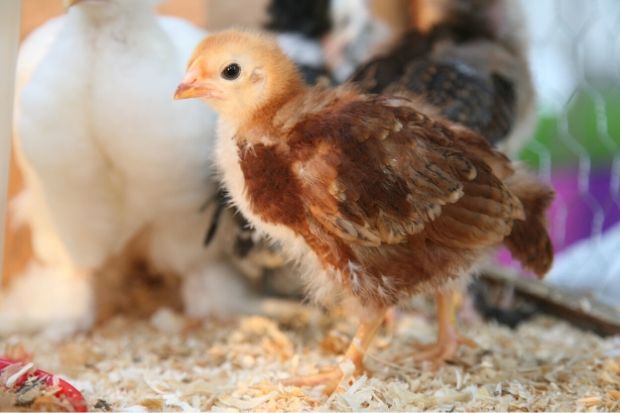
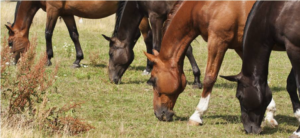 Watch Out For Toxic Plants in Hays, Pastures: Aren’t horses smart enough to know what they can and cannot eat?
Watch Out For Toxic Plants in Hays, Pastures: Aren’t horses smart enough to know what they can and cannot eat?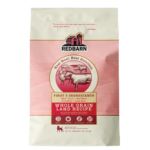
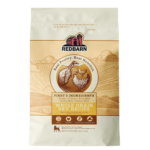
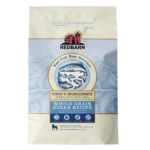 New Redbarn Whole Grain Dry Dog Food: Store #2 welcomes Redbarn’s Whole Grain Dry Dog Food to our shelves! We now carry all three of their products.
New Redbarn Whole Grain Dry Dog Food: Store #2 welcomes Redbarn’s Whole Grain Dry Dog Food to our shelves! We now carry all three of their products.